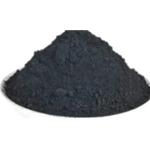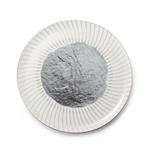10 Interesting Facts About Silver
Mar 5,2024
What is Silver?
Silver (Ag), atomic number 47, is a rare metal resource with dull-white color. In nature, most of the silver resources are associated with Lead-Zinc ores, except for a small portion in the form of simple substance or silver minerals. Therefore, the acquisition of metallic silver is relatively difficult. Flotation is the principal beneficiation method to concentrate silver minerals.

Ag is a highly conductive and thermally efficient metal. It has a lustrous white colour, a melting point of 961.93°C and a boiling point of 2212°C. Its density at 20°C is 10.5 g/cm³. Silver is known for its ductility and malleability, second only to gold.
What are the 10 interesting facts about silver?
1. An ounce of silver can be drawn into a strand of wire 8,000 feet long.
Silver is extremely malleable and ductile. Amongst metals, it is second only to gold. That's because the metallic bonds in silver are relatively weak. Interestingly, the high ductility of silver allows it to be rolled into transparent foils as thin as 0.3 microns, about 150 times thinner than ordinary paper.
2. The word “silver” comes from the Anglo-Saxon word seolfor.
The chemical symbol for silver is Ag. This is derived from the Latin "argentum" , which is itself based on the Sanskrit word "argunas" which means "shining".
3. Silver is a great reflector
Silver is more reflective than any other element which means it’s essential in things like telescopes, solar panels, batteries and mirrors. Although polished silver is capable of reflecting 95% of the visible light spectrum, it is actually poor at reflecting ultraviolet light.
4. Silver was discovered around 5000BC
Silver was one of the first five metals to be discovered by our prehistoric ancestors. Infact, early humans were actually able to separate lead and silver all the way back to 3000 BC. Silver coins and artefacts have even been unearthed which date back before 4000 BC. Silver occurs organically in nuggets in the same way as gold does, which means there is no need for manufacturing or processing.
5. Silver has antibacterial properties
Sterling silver has excellent antibacterial properties. Only a very small amount of concentrated silver or silver salts are needed to kill bacteria, and unlike conventional drugs and antibiotics, bacteria do not become resistant to silver, even over long periods of time.
6. Silver is a good conductor of heat
This is because silver contains individual free-moving valence electrons. These highly mobile electrons can flow long distances through the internal atomic structure without encountering something that causes them to change direction. As a result, heat is rapidly transferred through the metal.
7. Silver is also money
The words "silver" and "money" are the same in several languages. In French, for example, both words are argent. Silver has been used for centuries to produce currency for circulation and has become synonymous with the concept of money.
8. Silver may be worth more than gold
In ancient Egypt, silver was probably much more scarce in supply. Silver jewellery in Egypt was usually thinner or smaller than gold jewellery, and lists of valuables often placed silver above gold, suggesting its high value. The supply seems to have improved by the time it reached China.
9. Silver was associated with healing werewolves in ancient times
Silver is usually associated with healing powers and resisting spirits. Horror fans will undoubtedly be aware of the lore that silver bullets are the key to defeating werewolves, as well as healing them.
10. Silver is the most reflective element in nature
Polished silver reflects 95 per cent of the visible spectrum, so by coating the back of glass with a thin layer of silver, a highly reflective surface can be created. We have used this reflective metal in mirrors, telescopes, microscopes and solar cells, enabling us to explore the depths of the universe.
- Related articles
- Related Qustion
- What is the charge of silver? Feb 18, 2024
Silver typically has a +1 charge when involved in an ionic bond. Although silver can form both +1 and +2 cations, the +2 is so rare that we usually name Ag + as silver ion, not silver(I) ion.
- Flame test and chemical principles of silver Jan 25, 2024
Silver do not produce a characteristic flame test color. There are several possible explanations for this.
- Applications and Preparation of Silver Sep 30, 2019
Silver is one of the oldest metals, known since ancient times. It is a precious metal worldwide, used in ornaments, coins, and utensils.
Cellulose gum, also known as carboxymethylcellulose (CMC), is essentially a thickening agent used in all kinds of food products. It is considered a fairly safe food additive.....
Mar 5,2024Catalyst and AuxiliaryOlmesartan medoxomil, rapidly converted to olmesartan, is a common angiotensin II receptor blocker effective in treating hypertension, heart failure, and diabetic nephropathy.....
Mar 6,2024APISilver
7440-22-4You may like
- Silver
-

- $685.00 / 1ton
- 2024-05-29
- CAS:7440-22-4
- Min. Order: 1ton
- Purity: 99%
- Supply Ability: 900ton
- Silver
-

- $6.00 / 1KG
- 2024-05-13
- CAS:7440-22-4
- Min. Order: 1KG
- Purity: More than 99%
- Supply Ability: 2000KG/MONTH
- Silver powder
-

- $1300.00 / 1kg
- 2024-05-01
- CAS:
- Min. Order: 1kg
- Purity: 98%
- Supply Ability: 20T





